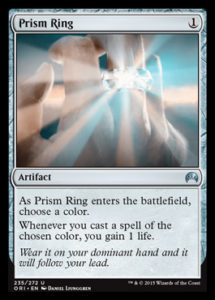This week on Uncharted Realms, we followed Jace and Liliana on a date! Well, more or less. Jace wants to help his old friend who he doesn’t totally trust, Liliana wants a hand with undoing her [casthaven]Demonic Pact[/casthaven] and getting rid of [casthaven]The Chain Veil[/casthaven], and Gideon – who nobody invited – wants some help dealing with the Eldrazi. Liliana leaves, upset that Jace would spurn her seemingly-legitimate appeal for aid to help “some uncooked side of beef from Sunhome”1, and the Living Guildpact makes ready to leave Ravnica in preparation for the next set’s Battle for Zendikar.
Family Matters
Liliana and Jace might have a complicated history, but not nearly so much as dating in general. For something so central to the human experience, courtship and romance constantly shift in historical importance, connotation, and content. Often contradictory and frequently written from a moralizing perspective, the sources of medieval history that deal with love and courtship reveal a great deal about the ways people got together before the modern era.
Like a lot of social structures in medieval Europe and the Mediterranean world, courtship in the pre-modern era was far more of a communal process than we might necessarily find comfortable. In every level of medieval society, marriage ultimately represented one of the largest legal transfers of capital between individuals prior to the widespread use of investment banking.2 Dowries (a payment from the family of the bride, ostensibly matched by the husband’s expected property upon which to begin an independent life) involved the potential movement of acres of land from one group to another, and the newly-formed family united the economic fortunes of their respective kin groups. As such, a pair bond between two individuals necessarily involved their entire extended family and hinged upon their negotiation and approval. Jace and Liliana might object to Gideon’s interruption at their candlelit dinner, but they’d probably prefer it to a few chaperones from their parents’ generation.
In addition to involving kin groups through economic interrelation, courtship and marriage in the medieval period was focused upon procreation and the continuation of family lines. Married couples were very much expected to “be fruitful and multiply,” as a Puritan woodcut informed the faithful in 17th century New England. Consanguinity – a close blood interrelation – and failure to consummate, both barriers to childbearing, are the two most frequently cited legal justifications for divorce in English society (on either side of the Atlantic) until well through the 18th century.3
Marriage ultimately represented one of the largest legal transfers of capital between individuals before the modern era.
In these senses, courtship and marriage, like so much of human activity in the pre-modern era, related directly to ensuring communal survival and prosperity. Marriage involved the massive transfer of land and property and the vital continuation of life and bloodline for members of two separate kin groups. The norm, therefore, was a tradition of courtship in which both wider families played a perhaps greater role than the young fiancees themselves. Love was expected to bloom within the confines of marriage rather than predict it, and in many works of medieval philosophy and literature (like St. Augustine’s writings), the attendant virtues were not desire and affection as much as loyalty and duty for husband and wife alike.4
Love in the Time of Cholera (and other Plagues)
Parents aside, though, Jace and Liliana would not be an entirely unusual couple in the streets of a medieval city like Ravnica. The average age of marriage in the medieval period, to be sure, was younger than Liliana’s millenia of life. But from a survey of marriages recorded in England between 1180 and 1423 CE, a young lady could expect to married at a median age of seventeen years old, as opposed to 25 in the U.S. in 2000.5 Unlike the modern notion of medieval marriage, which frequently imagines a huge imbalance of age between older male and younger female spousal partners, about 71% of married couples were within five years apart.6
Couples quarreled and made up, teased and mocked, felt lust and fell madly in love with one another, regardless of era.
If Jace and Liliana were courting a little beyond the prying eyes of their respective families and a little above the average age of marriage, it would not be totally beyond the pale of medieval society. Although medieval marriage laws and moral literature make clear the expectations of married couples and courting lovebirds, the need for such texts in the first place suggests the existence of deviance from the accepted norm. If Church literature and marriage contracts depict marriage and courtship throughout the pre-modern period as pragmatic and communal in nature, then there is certainly some merit to this image of medieval matrimony.
Yet it must be said that some of the best-known works of medieval and pre-modern literature – including the 14th century Canterbury Tales and Shakespeare’s Romeo and Juliet – paint a picture of marriage and courtship at once more complex and complete than the official narrative would suggest. Couples quarreled and made up, teased and mocked, felt lust and fell madly in love with one another, regardless of era.
So where does that leave Jace and Liliana? With no family to their names – except for, I suppose, that immortal zombie brother Liliana raised from the dead – there would not be nearly the same social expectation placed upon them, whole universes away from their homes and respective societies. Who could judge them for their mutual interest, animated at least in part by mutual need for aid? Like only the very wealthiest (above reproach) and very poorest (beneath notice) of medieval society, they are afforded a unique privilege: to court one another entirely based on their affection, mutual attraction, and admiration, plus perhaps some degree of common cause against demonic creditors.
That is, of course, if Gideon can leave them alone.
1 Sick burn.
2 With the possible exception of treaties, but in many cases a guaranteed peace involved marriage as well. Marriage contracts and dowries usually represented a larger shift of resources than any single transaction for even economically active medieval peoples.
3 Furthermore, although in general medieval and pre-modern marriage presumed a patriarchal balance of power between the sexes, women as well as men could bring suit for divorce based on failure to fulfill one’s marital duties.
4 http://www.brown.edu/Departments/Italian_Studies/dweb/society/sex/sex-spouses.php
5 http://madeofwynn.net/2013/09/23/misuse-of-the-word-medieval-part-13-most-girls-married-old-guys/
6 Ibid. I especially appreciate the author’s study of the “creepiness index.”



